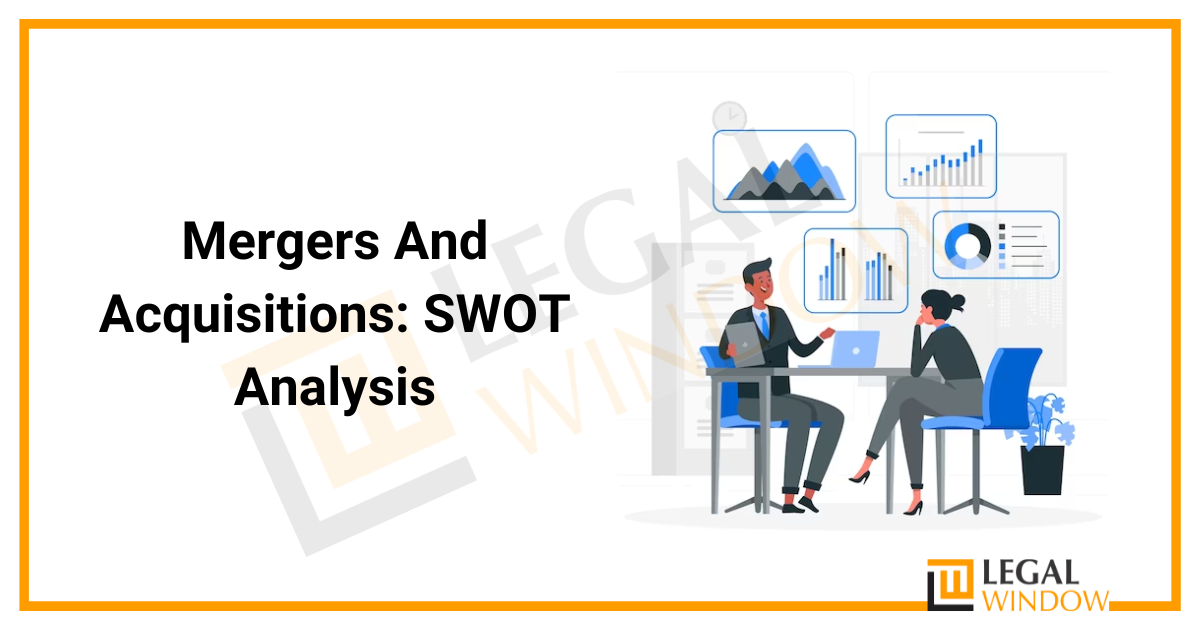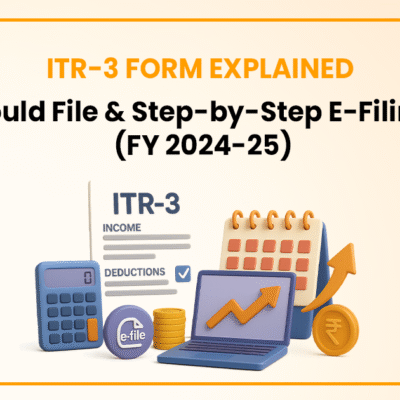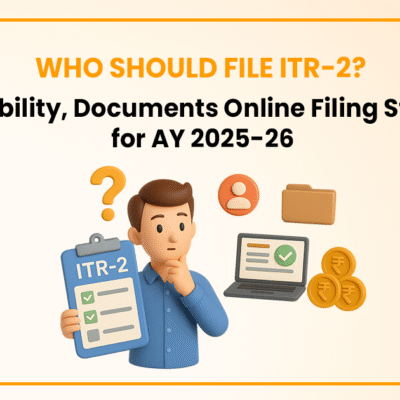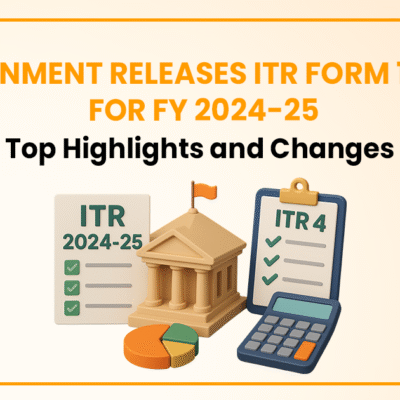
Mergers and acquisitions (M&A) are financial transactions in which one company, or merger partner, acquires or merges with another company, or acquisition target, to create a new entity. M&A can be a powerful tool for growth, diversification, and market expansion, but it is also a complex and risky process that requires careful planning, analysis, and execution to be successful. M&A is a crucial activity in the corporate world, and it can significantly impact both companies and stakeholders involved in the transaction. In this note, we will provide a brief background and overview of M&A, including its motivations and benefits. Then, we will analyse this practice's strengths, weaknesses, opportunities, and threats (SWOT).
| Table of Contents |
Applicability of Mergers and Acquisitions
Mergers and acquisitions, commonly called M&A, can be an effective tool for companies seeking to grow, expand, and diversify their business. However, M&A is only sometimes the best strategy for all companies and under all circumstances. Companies must carefully evaluate their internal strengths and weaknesses, the specific characteristics of the target company and the industry in which they operate to determine if an M&A transaction is the right path forward.
Here are some general criteria that companies may want to consider when determining the applicability of M&A:
- Financial strength: While M&A is undoubtedly expensive, especially regarding the upfront cost, successful M&A transactions can be instrumental in increasing a company's financial strength. Financially weak companies may be unable to afford the cost of acquisition and struggle to integrate the acquired business effectively. On the other hand, solid and stable companies may be better positioned to make strategic acquisitions and invest in their integration, which can lead to long-term financial gains.
- Internal resources: Before entering an M&A transaction, companies must carefully consider their internal resources and abilities. Do they have the personnel and expertise to evaluate the target company effectively, negotiate a favourable acquisition, and integrate the acquired business into their existing operations? Companies may consider hiring additional staff or consulting with outside experts to help them manage these critical processes.
- Market position: Companies may consider M&A to expand their market position, product offerings, or geographic reach. However, it's essential to carefully evaluate the potential benefits of an acquisition against its costs and risks. Companies should thoroughly research their target company and industry before acquiring.
- Cultural fit: Mergers and acquisitions can be challenging to manage because of the integration of different cultures, values, and working methods. Companies must carefully assess the compatibility of their culture with that of the target company before entering into an M&A transaction. Misalignment between the two cultures can lead to conflicts, reduced productivity, and increased costs, among other things.
- Industry trends: Companies should consider their industry's current and future trends when evaluating the potential benefits of M&A. For example, companies operating in fast-moving industries, such as technology or aerospace, may benefit from strategic acquisitions to stay ahead of new trends and technological advancements. On the other hand, companies in more established and mature industries, such as retail or hospitality, may benefit from adding new product lines or services through M&A.
- Regulatory environment: Before entering an M&A transaction, companies should carefully evaluate the regulatory landscape to ensure the acquisition complies with all relevant laws and regulations. Failure to do so can result in significant penalties, fines, or other negative consequences.
Motivations and Benefits of M&A
Mergers and acquisitions offer a variety of potential benefits to companies and other stakeholders. Some of the most significant are:
- Growth and Scale: M&A allows companies to expand operations and reach new markets, increasing revenue and profitability.
- Diverse Product Offerings: Companies can acquire others with complementary products or services, creating more diverse customer offerings.
- Cost Reduction: M&A can reduce costs and increase efficiencies by eliminating duplicate systems, processes, and personnel.
- Accretion of Technical Expertise: Companies can acquire others with specialized knowledge or technology, allowing them to increase their own capabilities and competitive edge.
SWOT Analysis of M&A
Now, look at the strengths, weaknesses, opportunities, and threats associated with M&A transactions.
Strengths:
- Access to New Markets: Mergers and acquisitions can provide companies access to new markets, products, and technology.
- Increased Competitive Advantage: M&A can strengthen companies' competitive positions by providing them access to new products, services, and expertise.
- Ability to Scale: Acquisitions can enable companies to scale their operations quickly and effectively by leveraging the resources and expertise of the acquired entity.
- Increased Product Diversification: Acquisitions can help companies increase their product portfolios, making them more attractive to customers and reducing their dependence on a single product or service.
Weaknesses of M&A transactions:
- Management Attention: Integrating a new entity can be time-consuming and resource-intensive, which may divert the management's attention away from core business operations.
- Cultural Conflict: The merger of two companies may be complicated by conflicts between their cultures, which can be challenging to manage and resolve.
- Integration Costs: Integrating a new entity can be expensive regarding financial resources and management time. Failed integrations can result in increased costs and reduced efficiencies.
- Risk of Overpaying: Companies may end up overpaying for acquisition targets due to a lack of due diligence, negatively impacting the bottom line.
- Strategic Mismatch: If the acquisition target is not strategically aligned with the acquiring company, the integration process can be complicated, and the benefits may not be realized.
- Risk of Failure: Integrating a new entity can be complex and challenging, which may sometimes lead to failure. Failed M&A transactions can result in significant financial and reputational damage for the acquiring company.
Opportunities:
M&A can also present several opportunities for companies to help them achieve their goals. Here are some opportunities that companies may look to capitalize on through M&A:
- Market Expansion: Acquisitions provide companies with access to new markets, which can help them to expand their customer base.
- Product and Service Enhancements: Acquisitions can provide companies with additional products and services to offer customers, enabling them to differentiate themselves in the market.
- Improved Technological Capabilities: Acquisitions can provide companies with access to new technologies, expertise, and intellectual property, which can help them to enhance their technology systems and capabilities.
- Cost Synergies: Acquisitions can help companies to reduce costs by eliminating redundant systems, processes, and personnel, leading to increased operational efficiencies.
- Entry into New Industries: Acquisitions can allow companies to enter new industries, which can help them diversify their product offerings and gain leverage in niche markets.
Risks and Threats:
While there are many benefits to M&A, there are also significant risks and threats associated with the process. Some of the most significant include:
- Financial Risks: Acquisitions can be costly, and there is always a risk that the benefits may not materialize as anticipated. It can result in significant financial losses for the acquiring company.
- Strategic Risks: Acquisitions may need to align with the acquiring company's long-term strategic goals and objectives, leading to a misalignment of resources and a lack of focus within the organization.
- Integration Risks: Integrating a new entity can be complex and challenging, and there is always a risk that the integration process may fail to be successful. It can result in lost revenue, increased costs, and damage to the acquiring company's reputation.
- Legal Risks: M&A transactions can be subject to regulatory and legal challenges, including antitrust issues, security concerns, and data privacy risks. Failure to comply with these regulations can result in significant legal and financial penalties.
- Cultural Risks: The merger of two companies with different cultures can be challenging, and cultural misalignment is always risky. It can lead to conflicts, reduced employee morale, and decreased productivity.
- Reputation Risks: Failed or unsuccessful acquisitions can damage the acquiring company's reputation, losing customer trust and market share.
- Technological Risks: Using outdated or incompatible technology can lead to integration issues and data losses, further complicating the integration process.
Documents Required for Mergers and Acquisitions
Documents required for mergers and acquisitions (M&A) transactions can vary depending on the specific deal, the parties involved, and the applicable regulatory requirements. Here's a general list of the commonly required documents:
Non-Disclosure Agreement (NDA):
An NDA is a contract between two parties that requires them to keep confidential certain information disclosed during their negotiations. It is often the first document signed in an M&A transaction.
Letter of Intent (LOI):
An LOI is a non-binding agreement between the parties outlining the general terms of the proposed transaction. It is often used as a preliminary agreement to guide negotiations, and it can often be negotiated and modified before finalizing the binding agreement.
Binding Agreement:
The final agreement between the parties outlines the terms of the deal and each party’s obligations. It can cover multiple aspects of the transaction, such as the purchase price, the conditions of the acquisition, the structure of the merged entity, and the governance of the new company.
Disclosure Schedule:
This document includes a detailed list of all assets and liabilities of the companies involved, along with their corresponding values and potential liabilities. It outlines all material facts and information relevant to the transaction, including potential legal disputes or pending litigation.
Financial Statements:
These statements provide a detailed overview of the financial affairs of the companies involved, including income statements, balance sheets, and cash flow statements. They are used to evaluate the financial health and stability of the companies before the merger.
Due Diligence Report:
A due diligence report comprehensively assesses the target company's business, financial, legal, and operational aspects. It identifies potential risks or other factors affecting the target company’s value.
These are the most common documents required in an M&A transaction. Additional legal, regulatory, or financial documents may also be required depending on the jurisdictions involved. It's essential for the parties involved to carefully evaluate all legal and financial aspects of the transaction before signing any binding agreement. Professional advisors, such as lawyers, financial advisors, and tax advisors, can help ensure that the appropriate documentation is in place and that the transaction complies with all applicable legal requirements.
Process/Time for Mergers and Acquisitions
Mergers and acquisitions can be complex and time-consuming, involving multiple parties, documents, and legal formalities. The average timeframe for an M&A transaction can vary depending on several factors, including the size and complexity of the transaction, the jurisdiction, and the regulatory environment.
The process typically involves several stages, including:
Due Diligence:
It is the first stage of an M&A transaction, where the parties comprehensively evaluate the target company's business, financial, legal, and operational aspects. It can take anywhere from a few weeks to a few months, depending on the size and complexity of the target company.
Negotiations:
The parties negotiate and finalize the terms and conditions of the proposed merger or acquisition. It can take several months and may be subject to multiple revisions and adjustments before reaching a final, binding agreement.
Signing:
After the transaction terms are agreed upon, both parties sign the final, binding agreement, which specifies all the conditions of the M&A transaction.
Closing:
Finally, the parties complete the closing process, which includes transferring assets, paying the purchase price, and registering the new entity with the relevant regulatory authorities.

Conclusion
In conclusion, while M&A can be a powerful tool for growth and diversification, there are better solutions for some companies and all situations. Companies seeking M&A should carefully evaluate their internal resources, industry trends, regulatory landscape, and cultural fit with the target company before committing to an acquisition. With the proper preparation and guidance, companies can maximize the benefits, minimize the risks associated with M&A, and create long-term value for their stakeholders.
LegalWindow.in is a professional technology driven platform of multidisciplined experts like CA/CS/Lawyers spanning with an aim to provide concrete solution to individuals, start-ups and other business organisation by maximising their growth at an affordable cost. Our team offers expertise solutions in various fields that include Corporate Laws, Direct Taxations, GST Matters, IP Registrations and other Legal Affairs.
Categories
- Agreement Drafting (23)
- Annual Compliance (13)
- Change in Business (37)
- Company Law (150)
- Compliance (90)
- Digital Banking (3)
- Drug License (4)
- FEMA (17)
- Finance Company (42)
- Foreign Taxation (9)
- FSSAI License/Registration (15)
- GST (124)
- Hallmark Registration (1)
- Income Tax (214)
- Latest News (36)
- Miscellaneous (170)
- NBFC Registration (8)
- NGO (18)
- SEBI Registration (6)
- Section 8 Company (10)
- Start and manage a business (27)
- Startup/ Registration (134)
- Trademark Registration/IPR (48)
Recent Posts
- Major Upgrade: Breaking Down GST 2.0 September 15, 2025
- New Income Tax Bill 2025 August 27, 2025
- ITR-3 Form Explained: Who Should File & Step-by-Step E-Filing Guide (FY 2024-25) June 25, 2025
All Website Tags
About us
LegalWindow.in is a professional technology driven platform of multidisciplined experts like CA/CS/Lawyers spanning with an aim to provide concrete solution to individuals, start-ups and other business organisation by maximising their growth at an affordable cost.








